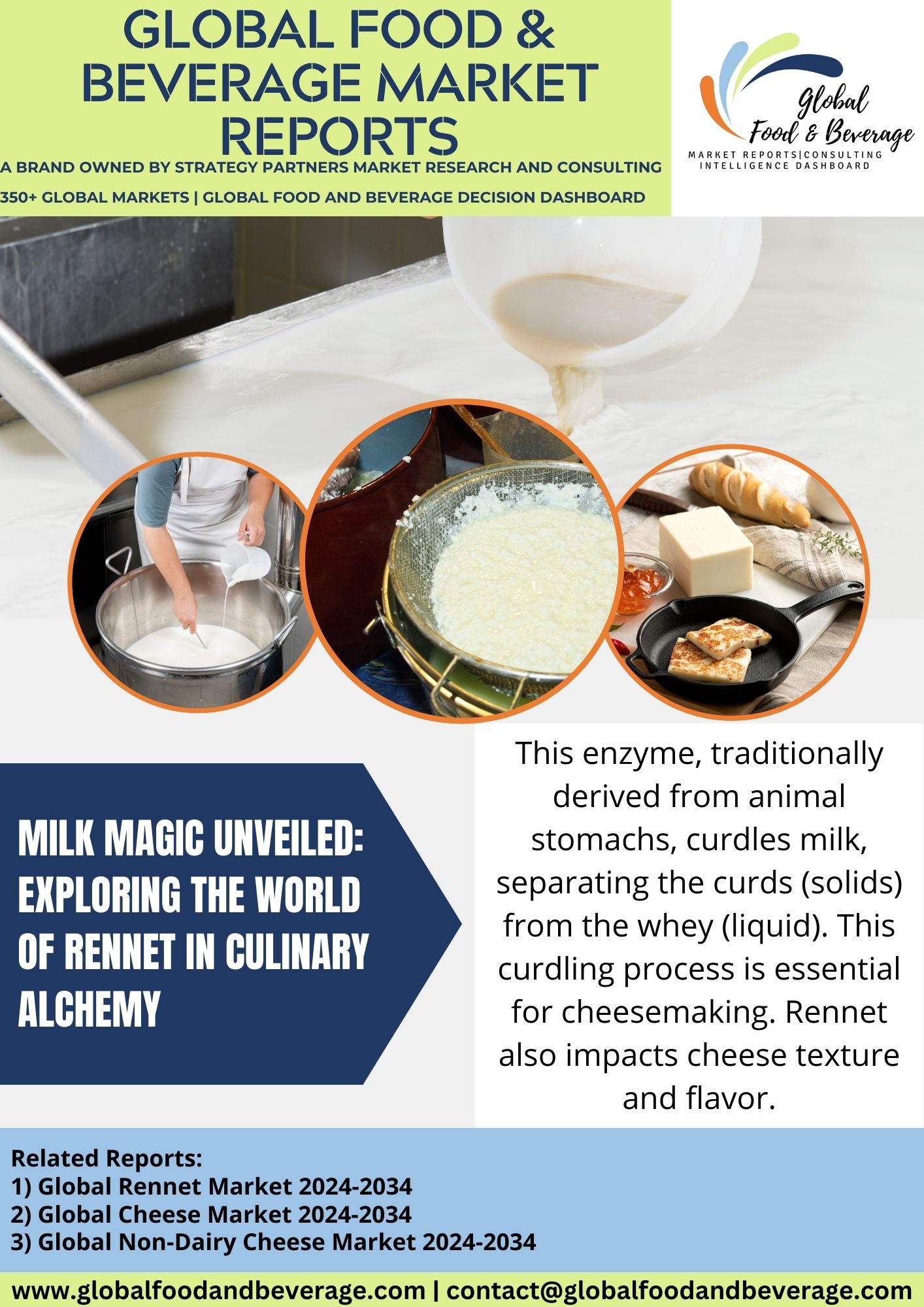Rennet, a complex mixture of enzymes traditionally obtained from the stomach lining of young mammals, plays a crucial role in the cheese-making process. The key enzyme in rennet is chymosin, which aids in coagulating milk proteins, leading to the formation of curds and whey.
Historically, rennet was sourced from the stomach lining of calves, lambs, or goats. However, modern cheese production has evolved to accommodate various preferences and ethical considerations, leading to the development of alternative sources of rennet. Microbial rennet, derived from genetically modified microorganisms or fungi, and vegetable rennet, sourced from plants such as thistles or fig leaves, are widely used alternatives, offering a vegetarian-friendly option for cheese production.
In cheese making, rennet initiates the coagulation process by breaking down the milk protein, casein, into smaller fragments. This process results in the formation of curds, solidifying the milk, while the liquid whey is separated. The curds are then pressed and aged to develop the unique characteristics of each cheese variety.
The use of rennet is fundamental to the creation of numerous cheese types, from soft and fresh varieties like mozzarella to hard and aged cheeses like cheddar. The choice of rennet influences the flavor, texture, and characteristics of the final cheese product.
The introduction of vegetarian-friendly rennet has gained popularity as consumers seek ethically sourced and plant-based alternatives. This shift aligns with the broader trend of plant-based and vegetarian choices in the food industry. While traditional rennet from animal sources is still utilized, the availability of alternatives provides flexibility for cheese makers and caters to the diverse dietary preferences of consumers.
Rennet’s role in cheese making is not merely technical; it also contributes to the unique and nuanced flavors that distinguish different cheeses. The enzyme’s ability to coagulate milk proteins is a testament to the art and science behind cheese production, where choices in rennet type and usage influence the final product’s taste, texture, and appeal.
ADVANCEMENT:
Advancements in rennet, a key enzyme used in cheese production, have significantly impacted the dairy industry on a global scale. Traditional rennet, derived from the stomach lining of young ruminant animals, has seen innovations with the advent of microbial and genetically engineered alternatives. Microbial rennet, produced using microorganisms like fungi or bacteria, offers a vegetarian-friendly and more consistent alternative to traditional rennet.
Genetically engineered rennet, often derived from microbial fermentation, represents a major breakthrough. This recombinant DNA technology allows for the production of chymosin, the key enzyme in rennet, without the need for animal-derived sources. Genetically engineered rennet addresses ethical concerns related to animal welfare, reduces production costs, and ensures a stable and sustainable supply for the cheese industry.
Furthermore, advancements in fermentation and enzyme production technologies have improved the efficiency of rennet extraction processes. This results in higher yields and better standardization of rennet products, contributing to the overall quality and consistency of cheese production.
As the industry continues to explore sustainable and ethical alternatives, the evolution of rennet exemplifies the intersection of biotechnology and traditional cheese-making practices. These advancements underscore the dairy industry’s commitment to innovation, environmental sustainability, and meeting the diverse needs of consumers.
CHALLENGE:
Rennet, an enzyme complex used in cheese production to coagulate milk, faces specific challenges in the global market. One significant challenge is the diversification of cheese preferences and dietary restrictions. As consumer demand for alternative and plant-based products rises, traditional animal-based rennet faces competition from microbial and plant-based rennet alternatives. Meeting the evolving needs of consumers while maintaining the traditional characteristics of cheese poses a challenge for the rennet industry.
Supply chain vulnerabilities impact the industry. Rennet production often relies on specific sources, such as the stomach lining of calves or microbial fermentation. Ensuring a stable supply chain while addressing sustainability concerns, ethical considerations, and potential supply chain disruptions is essential for the industry’s resilience.
Regulatory compliance and labeling complexities add to the challenges. Different regions have varying regulations regarding the use of rennet in cheese production, as well as labeling requirements. Navigating these diverse standards requires rennet manufacturers to invest in compliance expertise to ensure market access and consumer trust.
Technological advancements and innovation are crucial for the industry’s growth. Developing more efficient and sustainable methods for rennet production, exploring new enzyme formulations, and adapting to changing market demands require ongoing research and investment in biotechnology.
Consumer awareness and education are ongoing hurdles. Communicating the differences between animal-based and alternative rennet sources, as well as the implications for ethical and environmental considerations, is crucial. Educating consumers about the diverse options available in the rennet market can impact purchasing decisions.
CONCLUSION:
In conclusion, the rennet market is witnessing sustained growth driven by the expanding global cheese industry and the demand for traditional and specialty cheese varieties. Rennet, a key enzyme in cheese production, continues to be pivotal in curdling milk for cheese making. As consumer preferences shift towards artisanal and high-quality cheeses, the market for rennet is expected to thrive. Innovations in microbial and plant-based rennet alternatives address sustainability concerns. With a growing appreciation for diverse cheese flavors, textures, and production methods, the rennet market presents ongoing opportunities for manufacturers to meet the evolving demands of the dynamic and diverse global cheese market.
